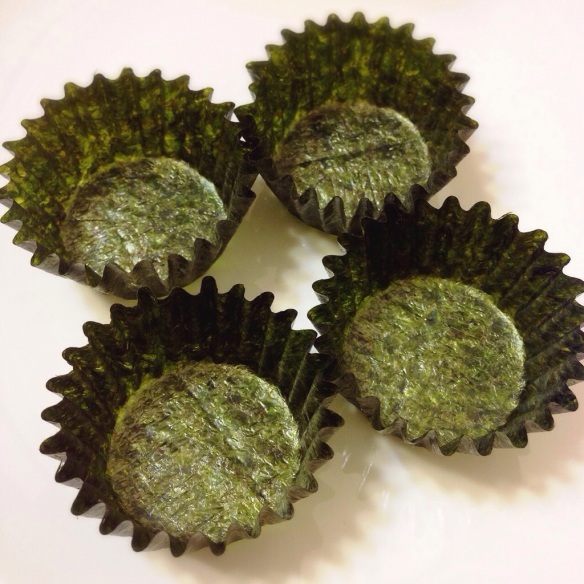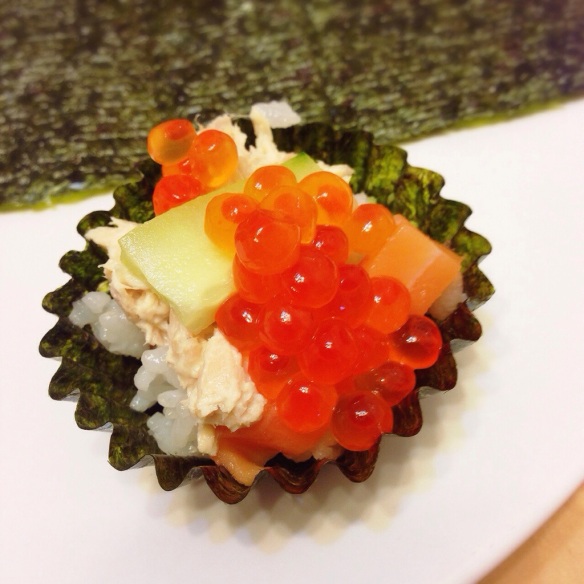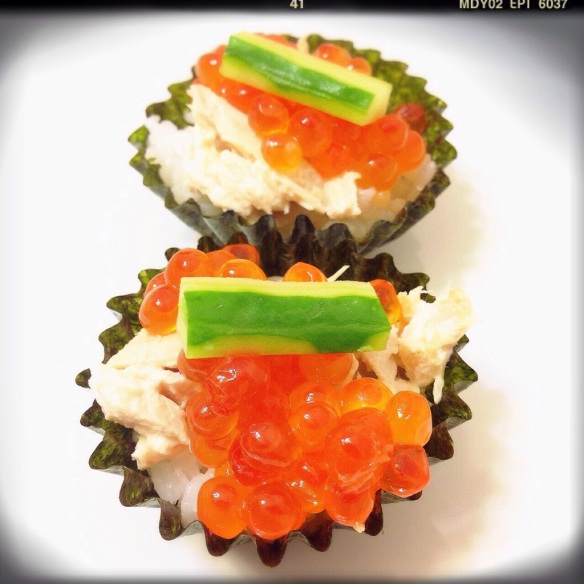What does one do with a few hours to spare between meals in Hakone? Play tourist, of course! With only one day to explore the area and some road blockages due to the recent snow, we decided to focus on visiting Hakone Shrine and catching a glimpse of Mt. Fuji. But before we could start the day, my father had to have his adzuki bean fix, so we found a little shop that served soba-shiruko (そば汁粉), a sweet adzuki bean soup with buckwheat dumplings.

Soba-shiruko served with pickles to offset the sweetness.

Soba dumplings have an ‘interesting’ texture…
Hakone Shrine, a Japanese Shinto shrine, is situated at the top of a hill and may be difficult for some to access. There is a beautiful tree-covered footpath that leads to the bottom of some rather steep steps. We made the trek up to the shrine and donated 100yen each to receive our fortunes. Unfortunately, the path to the torii (鳥居) was covered in snow so we couldn’t see it but it’s similar to the one that Monks is posing in front of, except that it’s set in water.

We overheard a tour guide explaining the chances of selecting a good omikuji (various fortunes written on small slips of white paper, which you choose at random from a box) was rather slim, something like a 10% chance of getting a good fortune, but we were lucky to each choose rather good fortunes!

The fortunes we chose were ‘small blessing’ and ‘blessing’, with ‘small blessing’ ranking slightly better than ‘blessing’.
We had to make an obligatory stop in the shrine’s ‘cafe’ so my father could try some of their delicious mochi before heading back to Lake Ashi (芦ノ湖).

Red bean, kinako, and black sesame flavoured mochi.
In order to get a good view of Mr. Fuji, you have to take a pirate ship across Lake Ashi and ride the gondola up to Togendai.

Lake Ashi Pirate Ship
The gondola ride was pretty, but nothing spectacular and we were starting to give up hope on seeing Mt. Fuji as the weather went from clear to cloudy.

At the top of Togendai there is a viewing station, several gift shops and buses that take you back into Hakone. There is also a little stand that sells one of the special foods of the region, Owakudani black eggs (大涌谷の黒たまご), eggs boiled in the hot springs of the volcano, which causes the shells of the eggs to turn black and smell of sulfur (as if eggs don’t already have a sulfuric odour).

It is believed eating these eggs will promote long life and a good year. Apparently each egg adds seven years to your life, and they are sold only in packs of five for 500yen – thus eating all of them adds an additional 35 years!

The eggs were very hot to the touch, and the combination of sulfur and eggs further emphasised the ‘egginess’ of the eggs (Boris Johnson and G would love this). We were expecting the cooked eggs to be black but once shelled they looked and tasted like regular boiled eggs. It would seem Hello Kitty is fond of these eggs, too, but don’t cats already have nine lives?

If you’re still hungry after eating all those eggs, you can also get some delicious hot baked sweet potatoes.
 And wash it all down with some Mt. Fuji spring water.
And wash it all down with some Mt. Fuji spring water.

We were queuing to board the bus to take us back into Hakone town centre when suddenly, the hubs pointed out a mountainous shape in the distance. Several seconds later the Japanese people in the queue finally noticed, as well, and there was a sudden rush to take photos before getting on the bus. I was completely mesmerised by the magnificent mountain standing right before us — was also sad to leave it all behind, but happy that my Mt. Fuji dream was now complete.

Back in town, we decided to check out the shops and I couldn’t help but notice the iconic tanuki (Japanese raccoon dog) that seem to be everywhere in Japan. I was tempted to purchase this little fellow.

We were feeling rather peckish as not had a proper lunch so I was also delighted to find some Moomin’s Soup in the local Family Mart. But of course, dear hubs, there is no escaping Moomins, not even in Hakone! Ufufu…

Moomin’s Salmon Milk Soup sighting at the local Family Mart.

What are some of your favourite spots in Hakone? What would you suggest for visitors that only have one day to explore the area?
 The roasted seaweed tastes great and the cups are easier to use than expected. When filling these cups, it is best not to use ingredients that contain too much sauce and the rice needs to be cooled. Serve immediately to avoid the cups losing their shape.
The roasted seaweed tastes great and the cups are easier to use than expected. When filling these cups, it is best not to use ingredients that contain too much sauce and the rice needs to be cooled. Serve immediately to avoid the cups losing their shape. Not only do these nori cups make for a healthy snack, they also cut down on packaging waste, so they’re good for you and the environment!
Not only do these nori cups make for a healthy snack, they also cut down on packaging waste, so they’re good for you and the environment!

















































 The breakfast menu is not as extravagant as the dinner menu, but it certainly is a feast compared to our usual morning cuppa and some toast!
The breakfast menu is not as extravagant as the dinner menu, but it certainly is a feast compared to our usual morning cuppa and some toast!


























